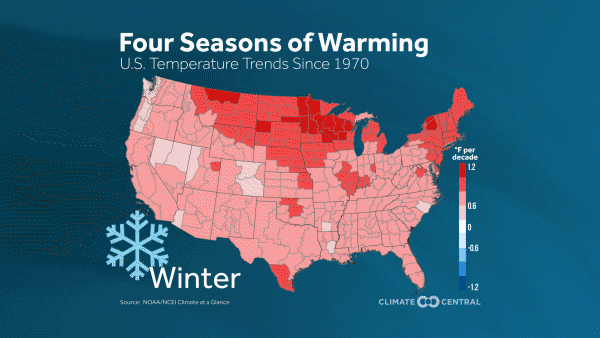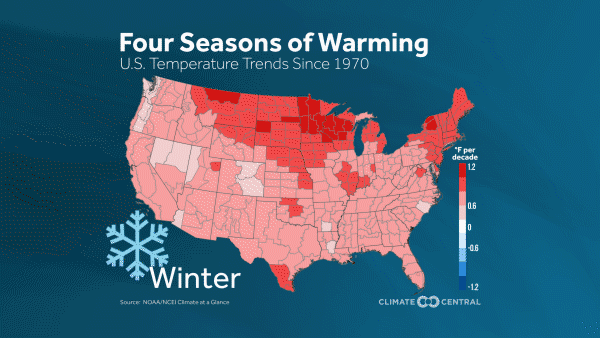







The U.S. has been warming during all four seasons due to climate change. In a previous release we highlighted which seasons have warmed the fastest. This week, we examine where the warming is the greatest during each season.
In general, cool locations heat up more easily than warm locations. Not surprisingly, winter is the season in which all climate divisions in the U.S. have shown significant warming, with the greatest warming in the Upper Great Lakes. Spring and summer have similar warming patterns, although the extent of U.S. warming is greater in spring versus summer. Meanwhile, the fall warming pattern is strong in all areas of the country, except for the Southeast.
We created an interactive for you to share with your audience (see above). Here, we calculated the rate of warming for each NOAA NCEI climate division since 1970 so that you can explore how the seasons have warmed in more detail for your area.
Warming during each season has differing impacts. The warmer winter stresses reservoirs that depend on melting snowpack later in the calendar year. Spring and fall warming is lengthening the growing season. While that may sound good initially, this disrupts the timing between established plant and animal behaviors, leaving food crops without necessary pollinators. Plus, it can support an extended ragweed and allergy season and lead to more aggressive poison ivy. Hotter summers also mean more heat related illness, like heat exhaustion, and of course higher cooling bills.
